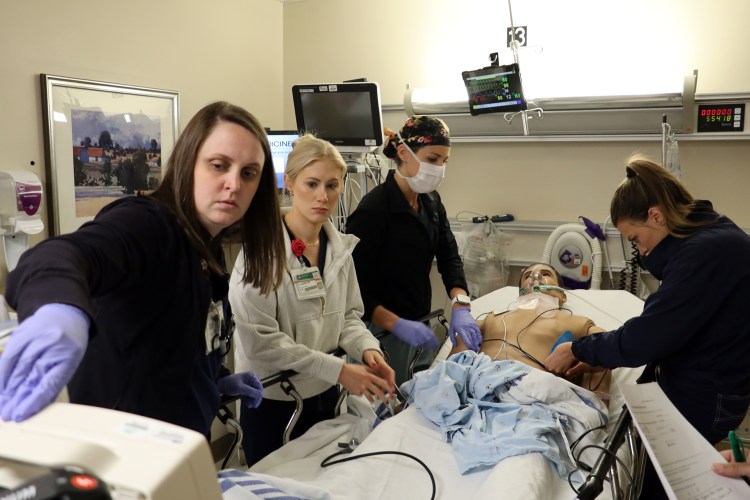Clinical Simulation debuts LAST in situ simulation

Sometimes, you save the best for LAST.
This past March, UAB Clinical Simulation debuted a local anesthetic systemic toxicity (LAST) in situ simulation for teams in the perioperative area, per request of the UAB Inpatient Pain Service.
LAST is a low-volume, high-risk complication to regional anesthesia, and its diagnosis and treatment are regularly simulated in the anesthesia and perioperative medicine residency program.
This most recent exercise, however, was different, in that it brought the simulation out of the lab and into a real-life setting. By definition, in situ simulations are sim-based learning experiences that are integrated into actual clinical environments, involving participants who are on-duty clinical team members during their actual workday.
In situ simulations provide a way to test the hospital system and discover opportunities for improving important metrics, while also identifying strengths, weaknesses, opportunities and threats in clinical systems, the environment and/or among teams.
Charlotte Streetzel, a third-year post-graduate resident, is no stranger to simulation, having participated in sim experiences throughout her residency. The LAST in situ scenario, however, was a first.
“We hadn’t done a LAST scenario yet, so it was nice to actually work through the algorithm and begin to see that in a clinical setting,” she said. “I think the No. 1 thing is recognizing the symptoms and putting that together with the history of recent regional block and confidently targeting that diagnosis to be able to act on it.”
Andrea Hammett, senior simulation educator and associate director in the Heersink School of Medicine’s Department of Anesthesiology and Perioperative Medicine Simulation Program, was pleased with the inaugural LAST in situ simulation.
“I think it went wonderfully,” she said. “Everyone participated and acted as if it was a true scenario, affording the learners an opportunity for teamwork in their own space.”
Streetzel agreed.
“It was great,” she said. “It provided valuable, hands-on learning—a preparation primer—so that we already have a plan to act on should the scenario happen in real life. I think we should do this often for our regional anesthesia team for sure. We could all benefit from this.”
To learn more about UAB Clinical Simulation’s in situ simulation program and how to get involved, visit here.
UAB Medicine’s Clinical Simulation program offers opportunities for individuals and teams across UAB Medicine and beyond to practice before they deliver care. We encourage all who provide and support patient care to “SimFirst.” Together, we can put our patients’ safety first.



0 Comments